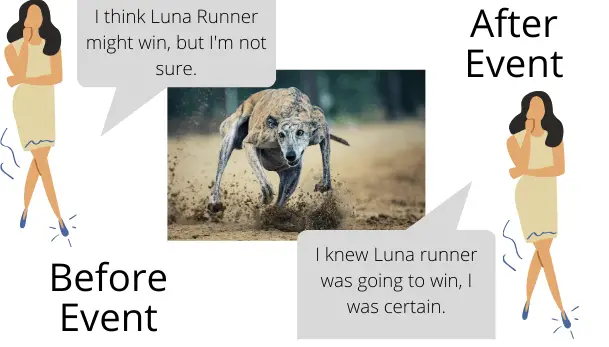

Recent studies involving the hindsight bias have investigated the effect age has on the bias, how hindsight may impact interference and confusion, and how it may affect banking and investment strategies. Having evolved from the heuristics of Tversky and Kahneman into the creeping determinism hypothesis and finally into the hindsight bias as we now know it, the concept has many practical applications and is still at the forefront of research today. Remaining relatively unmodified, this method is still used in psychological and behavioural experiments investigating aspects of the hindsight bias. Participants frequently assign a higher likelihood of occurrence to whichever outcome they have been told is true. This method involves giving participants a short story with four possible outcomes, one of which they are told is true, and are then asked to assign the likelihood of each particular outcome. In 1975, Fischhoff developed another method for investigating the hindsight bias, which was, at the time, referred to as the "creeping determinism hypothesis". This study is frequently referred to in definitions of the hindsight bias, and the title of the paper, "I knew it would happen," may have contributed to the hindsight bias being interchangeable with the phrase, "knew-it-all-along phenomenon." Some time after president Nixon's return, participants were asked to recall (or reconstruct) the probabilities they had assigned to each possible outcome, and their perceptions of the likelihood of each outcome was greater or overestimated for events that actually had occurred. They asked participants to judge the likelihood of several outcomes of US president Richard Nixon's upcoming visit to Beijing (then romanized as Peking) and Moscow. In an elaboration of these heuristics, Beyth and Fischhoff devised the first experiment directly testing the hindsight bias.

Two heuristics identified by Tversky and Kahneman were of immediate importance in the development of the hindsight bias these were the availability heuristic and the representativeness heuristic. In the early seventies, investigation of heuristics and biases was a large area of study in psychology, led by Amos Tversky and Daniel Kahneman. Baruch, a psychology graduate student at the time, saw an opportunity in psychological research to explain these observations. Meehl stated an observation that clinicians often overestimate their ability to have foreseen the outcome of a particular case, as they claim to have known it all along. In 1973, Baruch Fischhoff attended a seminar where Paul E. In fact, it had been indirectly described numerous times by historians, philosophers, and physicians.

The hindsight bias, although it was not yet named, was not a new concept when it emerged in psychological research in the 1970s. Examples of hindsight bias can be seen in the writings of historians describing outcomes of battles, physicians recalling clinical trials, and in judicial systems as individuals attribute responsibility on the basis of the supposed predictability of accidents. Hindsight bias may cause distortions of memories of what was known or believed before an event occurred, and is a significant source of overconfidence regarding an individual's ability to predict the outcomes of future events.

People often believe that after an event has occurred, they would have predicted or perhaps even would have known with a high degree of certainty what the outcome of the event would have been before the event occurred. Hindsight bias, also known as the knew-it-all-along phenomenon or creeping determinism, is the common tendency for people to perceive past events as having been more predictable than they actually were. For other uses, see Hindsight (disambiguation).


 0 kommentar(er)
0 kommentar(er)
